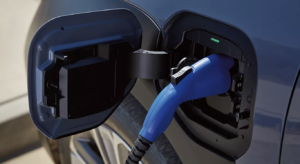Charge an EV at a Charging Station
When switching to an electric vehicle, many people are concerned about the time it takes for their car to charge. It is true that charging an EV from empty to full takes longer than refilling a gas tank, but with more and more fast chargers becoming available across the country, this gap is closing quickly.
The amount of time it takes to charge an EV depends on two factors: how much battery power is needed and how much electricity the charging station can deliver. To estimate your EV charging times, divide the amount of battery power you need by the maximum power capacity of the charger to get an approximate number of hours it will take for your car to fully charge.
Level 1 charging stations plug into standard household outlets and typically charge an EV at about the same rate as appliances like dryers. They are usually found at home, office parking lots, and some public charging stations. To use a level 1 charger, you will need an EV charging cable and plug the connector into your EV. Level 2 chargers plug into the same outlets as your washer/dryer but provide roughly twice the power. They are often seen in public spaces such as airports, shopping malls, and restaurants. You can install a level 2 charger at your home with the help of a trained electrician.

How Long to Charge an EV at a Charging Station
There are many different types of Ev Charging Stations on the market, and they differ in what type of current they provide (alternating or direct current) and how much power they can deliver. Some can be used to charge all different types of EVs, while others may only work with specific models or sizes of batteries. The most important thing is to find a station that is compatible with your EV and its charging needs.
EVs come equipped with an on-board computer that monitors the state of the battery and calculates how long it will take to recharge. It can also tell you when your car is close to a full or empty charge, which helps you plan accordingly. Generally speaking, it is best to leave your EV charged at around 80% and put it into power save or deep sleep mode when not in use. This will prevent your battery from being fully depleted or overcharged, both of which can damage it over time.
Some EV drivers will opt to charge their car at home or at work over a few hours during the night, and then drive the rest of the way with a full battery during the day. This is called opportunistic charging. Other drivers will choose to charge on-the-go at a public EV charging station during their commute or while running errands. This is referred to as DC fast charging, and it can typically be done in about 15-45 minutes. You will need a membership with a charging station operator or an app to identify yourself and pay for the electricity.